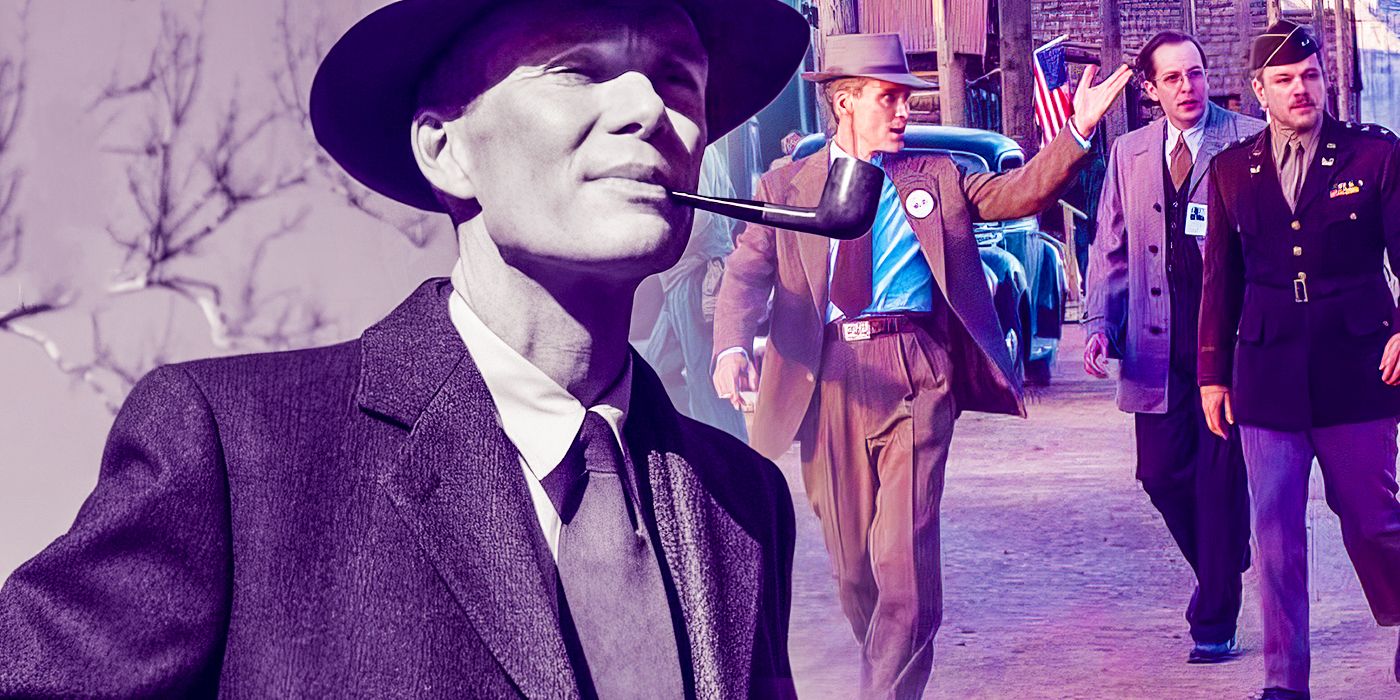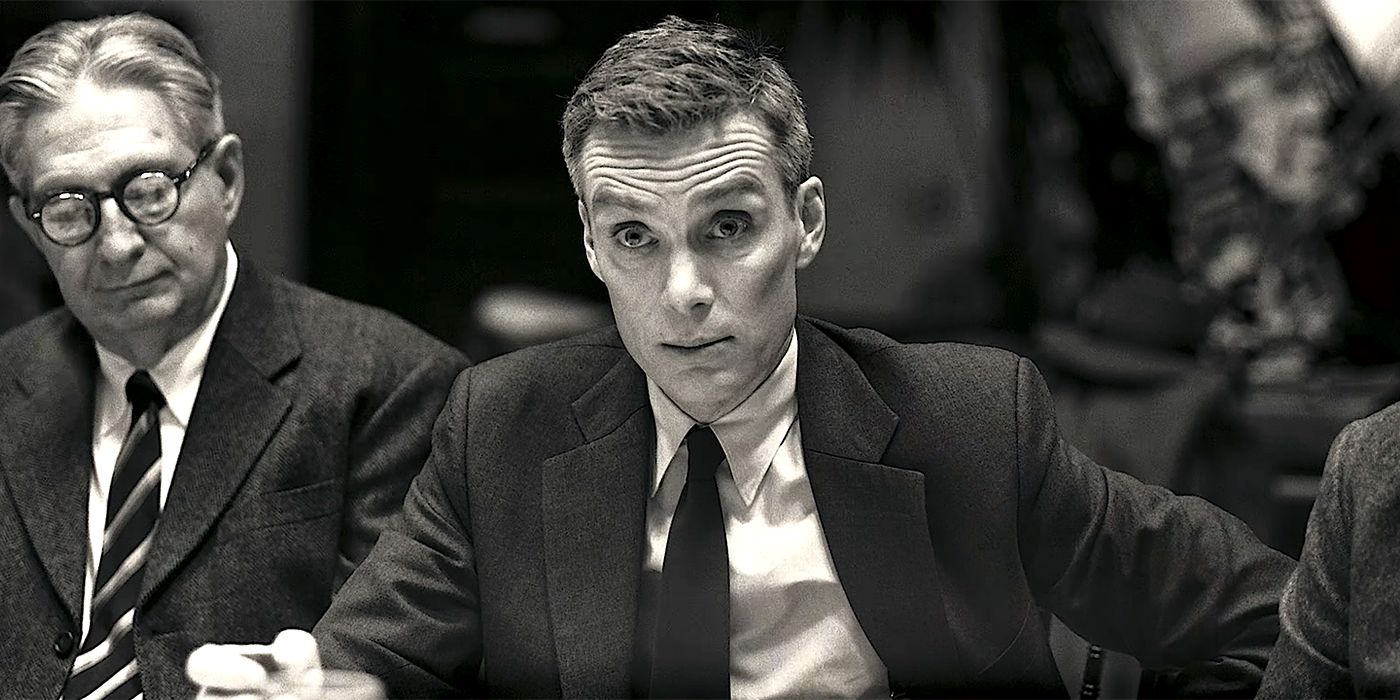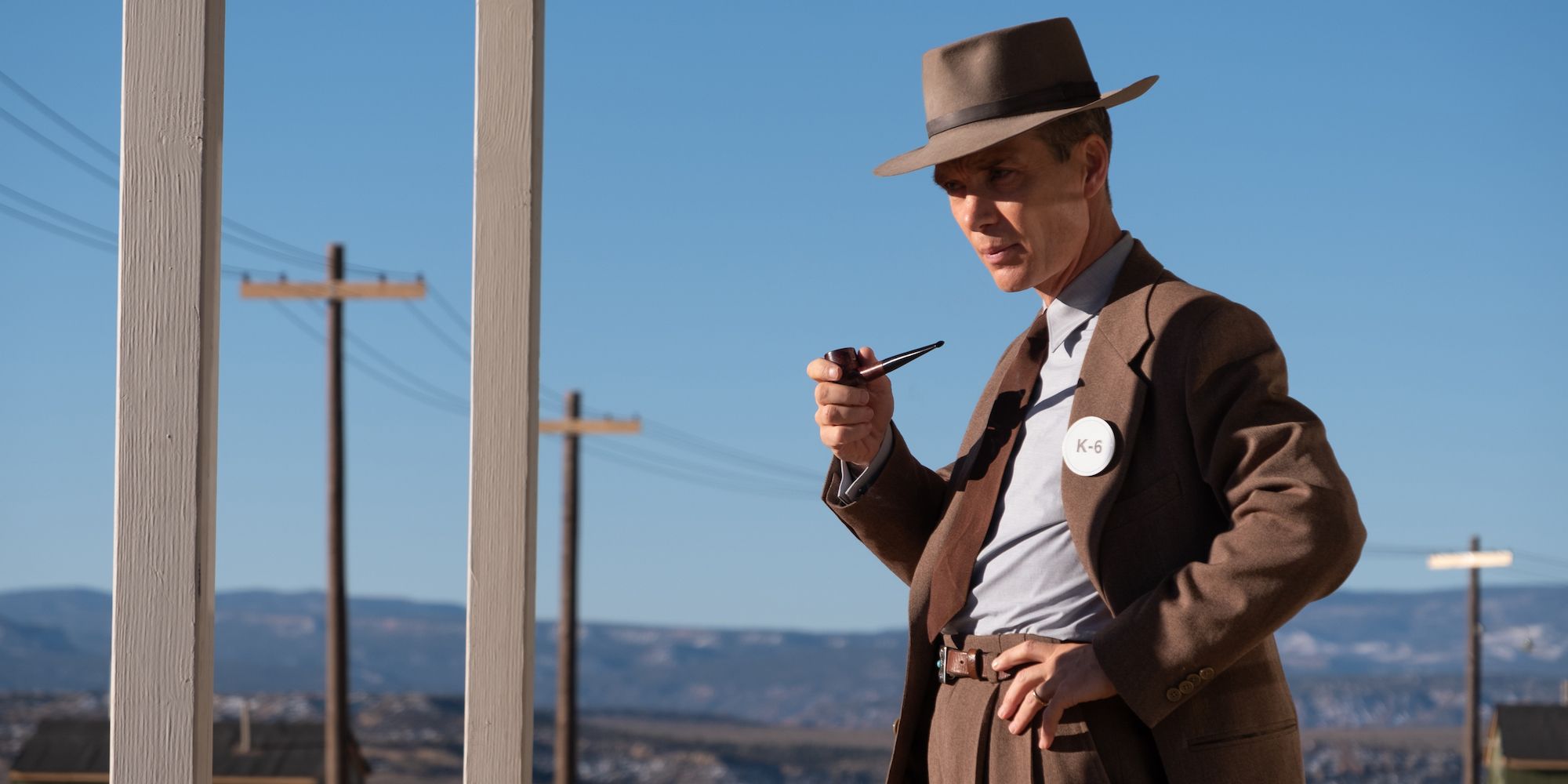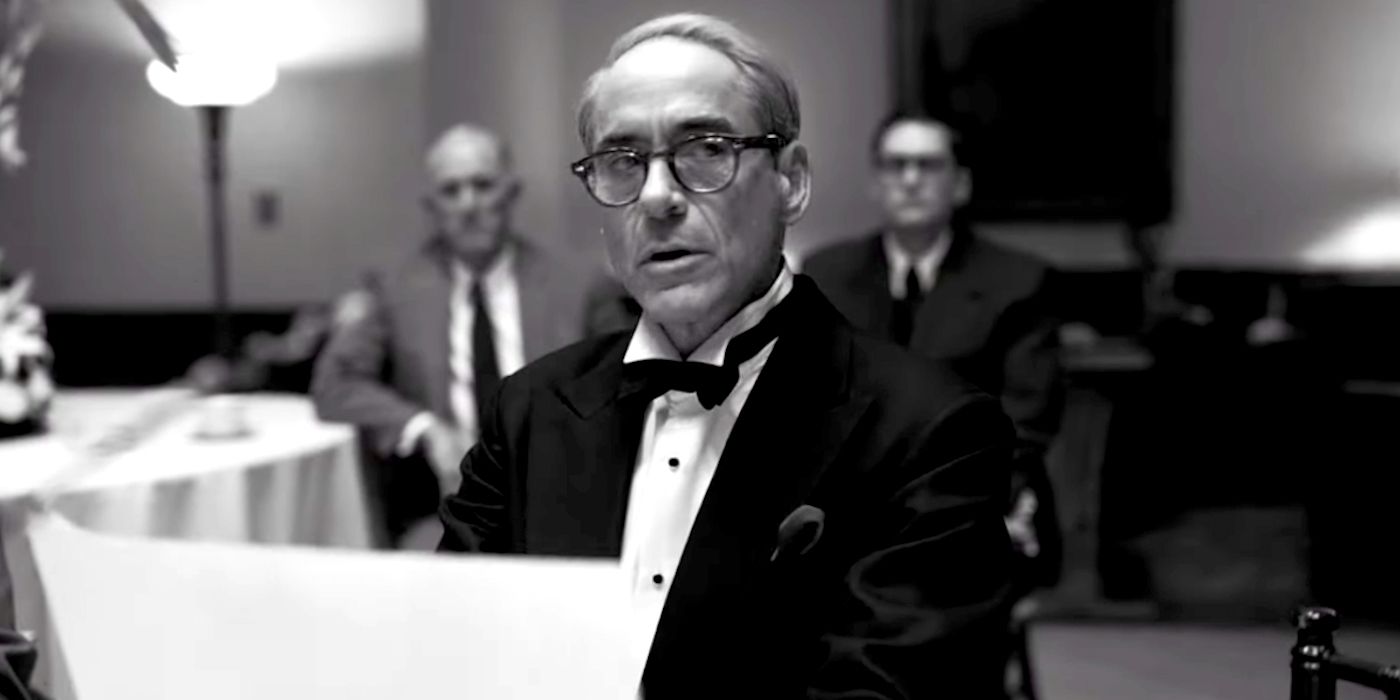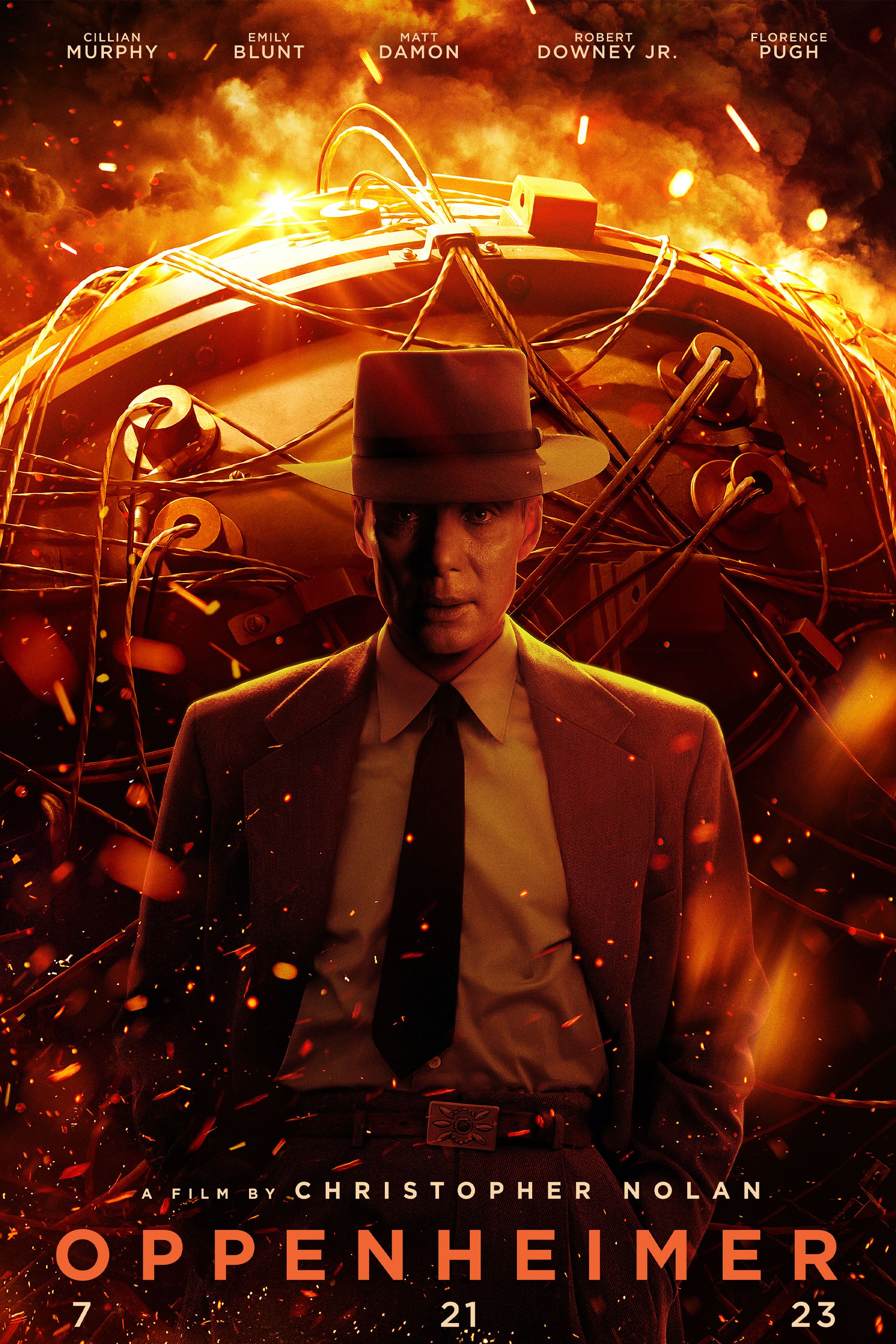Summary
- The black-and-white scenes in Oppenheimer represent objective moments in history, devoid of opinion or emotions.
- The color scenes in the film are subjective and showcase Oppenheimer's perspective, exploring his moral battle with creating the atomic bomb.
- The fission and fusion labeling of the color and black-and-white scenes symbolize the splitting and joining of Oppenheimer's story, respectively, leading to a complete narrative.
The Oppenheimer black-and-white and white scenes were a deliberate cinematography choice by Christopher Nolan to distinguish between the two timelines its story follows, with much that occurs after WW2 devoid of color. 2023's Oppenheimer centered around J. Robert Oppenheimer (Cillian Murphy), the man who created the atomic bomb. Oppenheimer depicts the events leading up to the atomic bomb’s first detonation and the consequences of the technology being unleashed on the world. Based on the biography American Prometheus by Kai Bird and Martin J. Sherwin, Oppenheimer brings an all-star cast to tell the story of the Manhattan Project.
However, Oppenheimer doesn't only detail Oppenheimer building the bomb but also showcases his relationship with the U.S. government and the deadly development of the first nuclear weapons, as well as the impact of his legacy on politics even after his death. Nolan did a lot with Oppenheimer, using a real atomic bomb to create a detonation scene and recreating the hearings after the bomb's creation. Nolan’s use of filming in black-and-white plays an important role in the hearing scenes in Oppenheimer, as it's these moments — focused on Robert Downey Jr. as Lewis Strauss — that are shot in a noir style.
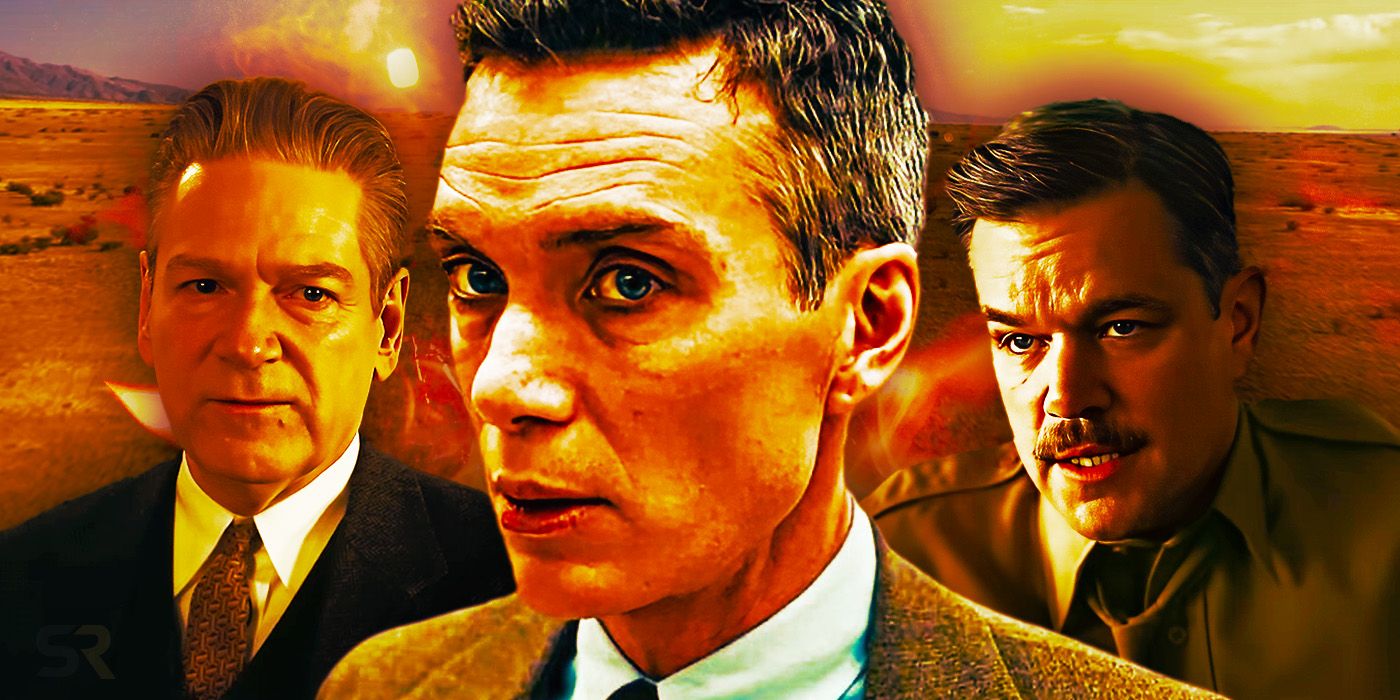
Oppenheimer Cast & Character Guide: Every Actor In Chris Nolan's Epic Historic Thriller
Christopher Nolan's next movie Oppenheimer boasts an extensive and talented cast, including a few familiar faces from Nolan's previous movies too.
Oppenheimer's Black & White Scenes Are Objective
The Scenes Without Color In Oppenheimer Signify Moments Of Historical Accuracy
Unlike Nolan’s Memento, which used black-and-white and color scenes to distinguish the movement of time, Oppenheimer’s use of black-and-white and color scenes represents the shifting perspective. The Oppenheimer black-and-white scenes are objective. They are moments in history that are not influenced by opinion or emotions. Oppenheimer is a historical figure, and his creation of the atomic bomb is extremely important in World War II history.
The black-and-white scenes in the film present the historical perspective of what happened to Oppenheimer after the atomic bomb was used.
Part of Oppenheimer’s life is recorded history because of this, such as the hearings against him in 1954 when he refused to give up his atomic weapon security clearance. The majority of Oppenheimer's black and white sequences are of the hearing against Oppenheimer after the weapon has been detonated, with Robert Downey Jr.’s Lewis Strauss leading the case.
The black-and-white scenes in the film present the historical perspective of what happened to Oppenheimer after the atomic bomb was used. The scenes are less about him and more about the repercussions of the bomb, as seen by others involved in the case, rather than being presented from Oppenheimer's point of view.
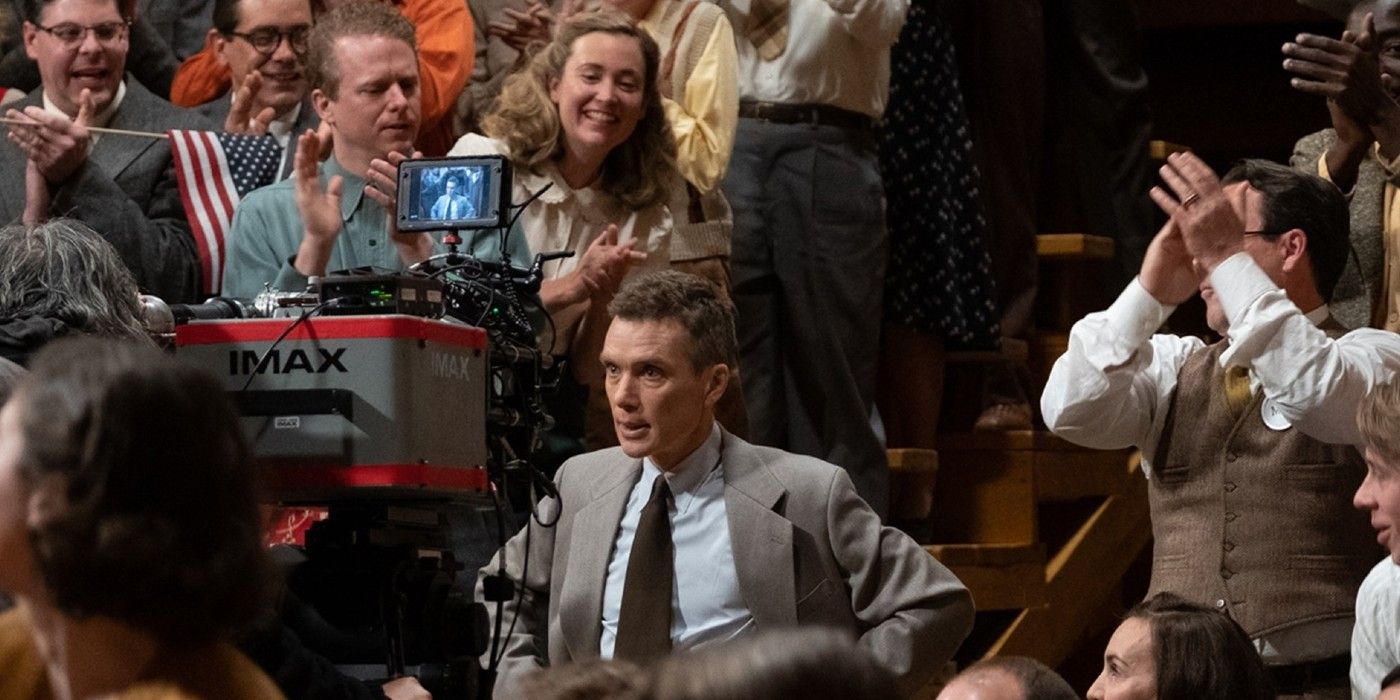
10 Incredible Oppenheimer BTS Details From Christopher Nolan's Movie
The behind-the-scenes of Oppenheimer, Christopher Nolan's biopic about the father of the atomic bomb, has its own story of dedication and artistry.
Oppenheimer's Color Scenes Are Subjective (And First Person)
The Color Moments In Oppenheimer Are When Most Creative License Is Taken
Oppenheimer’s color scenes make up most of the movie and are the subjective elements of the story, as well as Oppenheimer’s perspective. Nolan wrote these scenes in the first person, and they are not the exact historical facts of Oppenheimer’s story but the adapted side. In these scenes, Nolan has created moments between Oppenheimer and his colleagues, his wife, and moments alone that show Oppenheimer’s moral battle with creating the atomic bomb and how the desperation of war led to this scientific invention.
Oppenheimer’s journey to creating the atomic bomb is important as it explains his reasoning, but these are all subjective and can only be explored from Oppenheimer’s perspective. Arguably the major difference between the Oppenheimer black-and-white scenes and the color ones is their level of emotion in the film. There is a heightened emotional core found in the color scenes as Oppenheimer battles with the need to make the atomic bomb as he claims they should have the bomb rather than the Nazis.
Life in the Manhattan Project is also a significant aspect of the subjective view, as people were locked off from the world to ensure the project remained completely secret. The color scenes in Oppenheimer are much more tense and personal, which fits with Nolan’s reasoning, as the brighter colors match the heightened emotions.
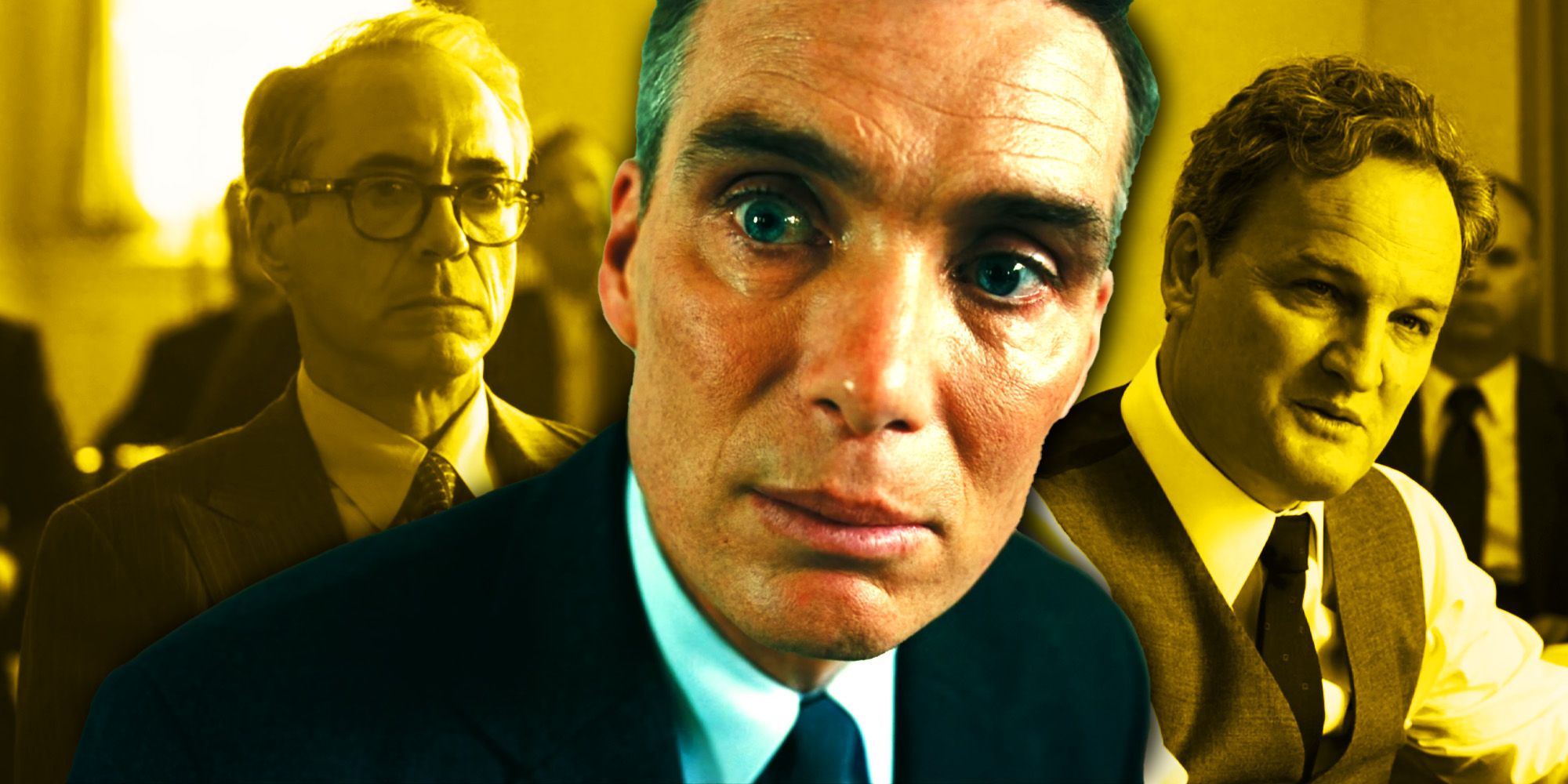
The Least Appreciated Part Of Oppenheimer Is Why The Movie Works So Well
Oppenheimer is brilliant because of the character performances and dramatic tension, but one under-appreciated part of the movie makes it work.
Oppenheimer's Color Sequences Represent Fission: What It Means
Nuclear Physics Inspired Nolan's Color Choices In Oppenheimer
At the beginning of the movie, Nolan provides a further separation between the color and black-and-white sequences in the film. The color sequences are labeled "Fission," which adds another level of depth to why Nolan chose the dichotomy of Oppenheimer's color palette. In science, the official meaning of the word fission is described as the splitting or separating of something into two or more parts. Fission highlights how the subjective, colored sequences of Oppenheimer are there to compartmentalize the film's story.
The colored sections of Oppenheimer break up the story into multiple parts, from Oppenheimer's early life in education, his various relationships, and, of course, his building of the atomic bomb. Similarly, the subjective sequences in Oppenheimer feature the aforementioned heightened emotion of the titular character and highlight Oppenheimer's troubles with building the bomb and its consequences.
As such, the colored sections of the film are subjective to Oppenheimer's point of view, showcasing the building of the atomic bomb that essentially broke down Oppenheimer's life after that due to the mental effects it had on him, representing fission through the film's story and characters.
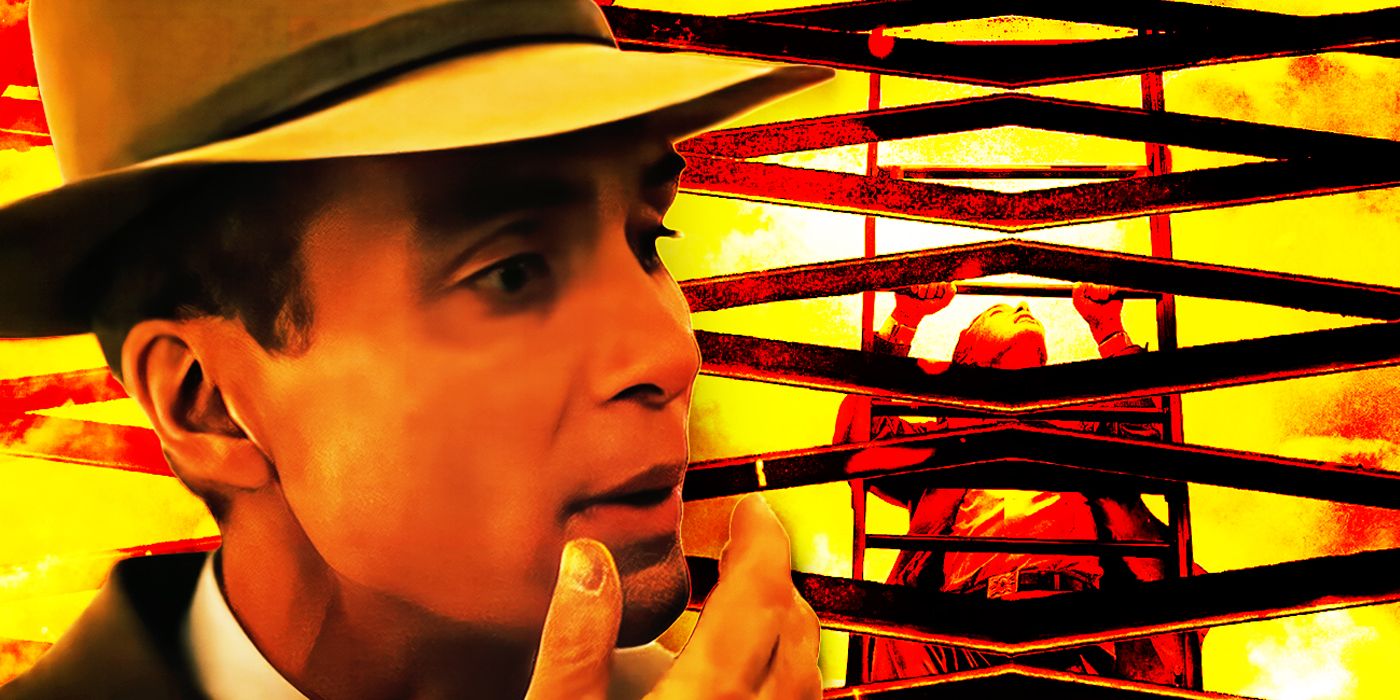
How Much Of Oppenheimer Is Real vs CGI
Christopher Nolan is known for preferring practical over CGI, so here is how much of Oppenheimer was done for real versus using visual effects.
Oppenheimer's Black & White Scenes Represent Fusion: What It Means
The Noir Segments Of Oppenheimer Converge At The End
Conversely, Nolan labels the Oppenheimer black-and-white scenes of the film as "Fusion." In science, fusion is the opposite of fission — the joining of two or more parts together to form a single entity. Through Oppenheimer's non-linear storytelling, the black-and-white sections of the film inform the final act, in which the rivalry between the titular scientist and Lewis Strauss comes to a head. Before some revelations in the third act, it is somewhat unclear how Oppenheimer's story fits together.
The Oppenheimer black-and-white scenes take the disparate, separate - or fissioned - parts of the film's colored sequences, and fuses them. All of Oppenheimer's life as seen through his eyes in the fission sections of the film are brought up to inform the black-and-white section of the story. The black-and-white scenes fuse all the different elements of Oppenheimer by the film's ending, which allows Nolan to tell a complete story through a color palette trick while relating it to the scientific mind of Murphy's titular "Father of the Atomic Bomb."
Other Movies That Use Color & Black & White Scenes For Thematic Purposes
Oppenheimer Is Another In A Long Line Of This Kind Of Movie
While the way Oppenheimer switches between color and black and white adds a captivating element to the story, it is not the first movie to use such a technique. In fact, it is not even the first time Christopher Nolan used this approach as he previously switched between the two color schemes in his mystery thriller Memento. With the movie jumping between timelines and having part of the story told in reverse, Nolan uses the black-and-white scenes to let the audience know these are the forward-moving sequences in the movie.
There are also many movies that use color alongside black and white to highlight certain things. Pleasantville is a film that stars Tobey Maguire and Reese Witherspoon as two siblings who are sucked into a wholesome sitcom and its black-and-white world. The world is shown to be a repressed one, but color begins appearing, showcasing that the characters within this world are beginning to see life differently.
Even more impactful, Steven Spielberg shoots Schindler's List in black and white only to reveal a sudden burst of color in the form of a little girl in a red coat seen during the liquidation of the Warsaw ghetto. It is meant to draw the audience's eye to this little girl wandering through the streets with chaos all around. However, the power of Spielberg's use of the only color in the movie is really powerful when Oskar Schindler sees a pile of bodies in the aftermath with a red coat visible among them.
However, the moment of Dorothy arriving in Oz and opening her door to reveal a land of vibrant color is one of the most iconic moments in movie history.
However, perhaps the best example of this is in The Wizard of Oz. While there were colored movies in 1939, it still wasn't uncommon for a movie to be shot in black and white. So when the movie begins with Dorothy Gale's life in Kansas in black and white, it seems fitting. Thus, the moment of Dorothy arriving in Oz and opening her door to reveal a land of vibrant color is one of the most iconic moments in movie history. It gives the audience the same feelings as Dorothy that they have just stepped into a magical place.



